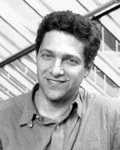2009
Peter L. Galison
- Professor
- Harvard University

Abstract
As they are usually understood, the designations "nuclear wasteland" and "pure wilderness" are opposites; when they converge on the sites of decommissioned nuclear weapons lands we often describe this circumstance as "paradoxical" or "ironic." Defiled areas come to be free of humans—and therefore thought of as wilderness; wilderness areas formed the "pure" backdrop for nuclear testing. Taking stock of plans to handle these lands that will remain saturated with isotopic toxins for tens of thousands of years, scientists, anthropologists, and psychologists have begun to try to mark these vast regions for the unimaginably far future. The collaboration will result in “Wastelands,” a co-directed and co-edited film at the intersection of scholarship and documentary film, about the attempt to mark and isolate nuclear wastelands for the deep future.
Galison, whose work intersects the humanities and the physical sciences, and Moss, an established documentary filmmaker, also want to encourage, by example, the further development of what one might call Visual Science and Technology Studies. The project builds on previous collaborations between Galison and Moss, such as “Secrecy” (2008) an award-winning documentary that treats the topic of classified information. The film has been well-received by the scholarly community because it communicates knowledge in a way that could not be done by written analysis alone.
Award period: July 1, 2009 – June 30, 2011
Galison, whose work intersects the humanities and the physical sciences, and Moss, an established documentary filmmaker, also want to encourage, by example, the further development of what one might call Visual Science and Technology Studies. The project builds on previous collaborations between Galison and Moss, such as “Secrecy” (2008) an award-winning documentary that treats the topic of classified information. The film has been well-received by the scholarly community because it communicates knowledge in a way that could not be done by written analysis alone.
Award period: July 1, 2009 – June 30, 2011

